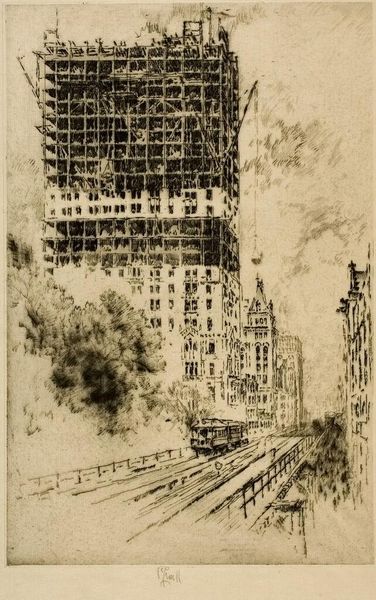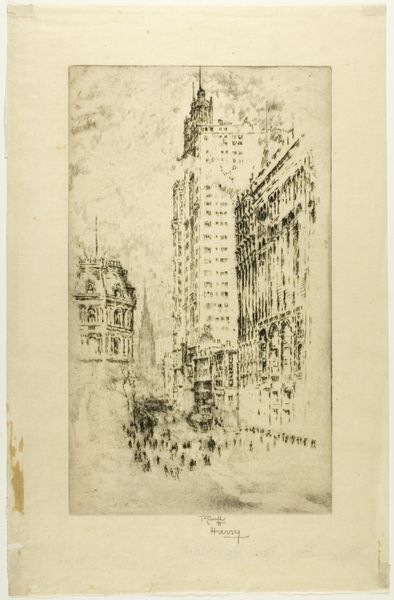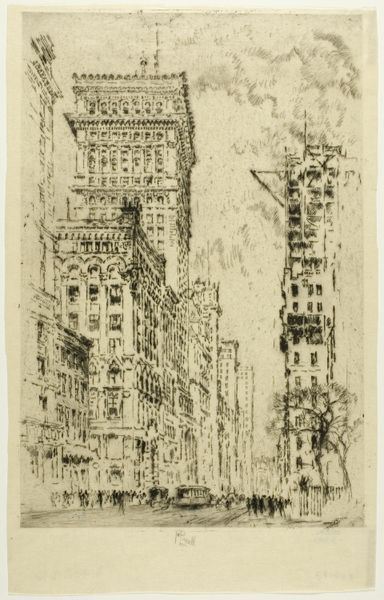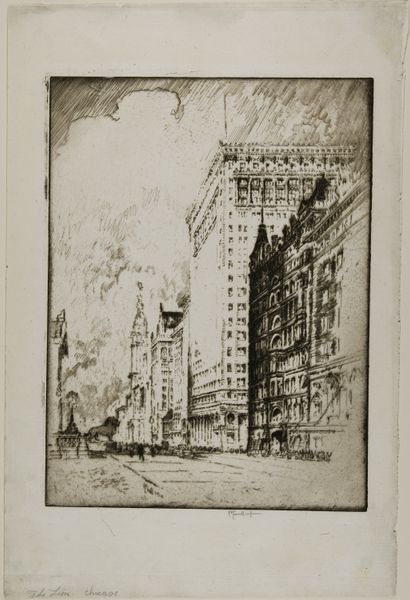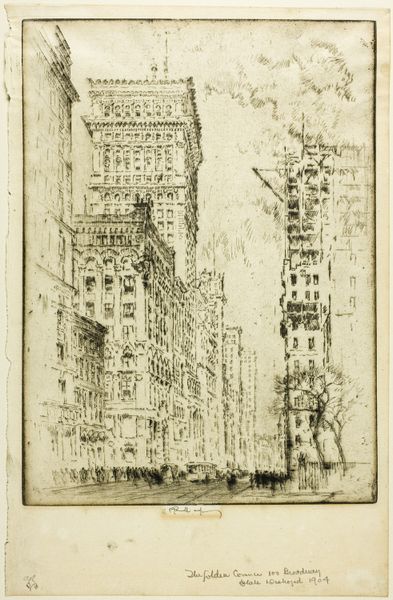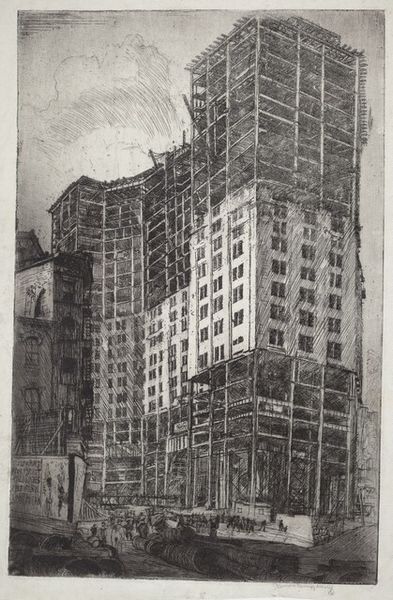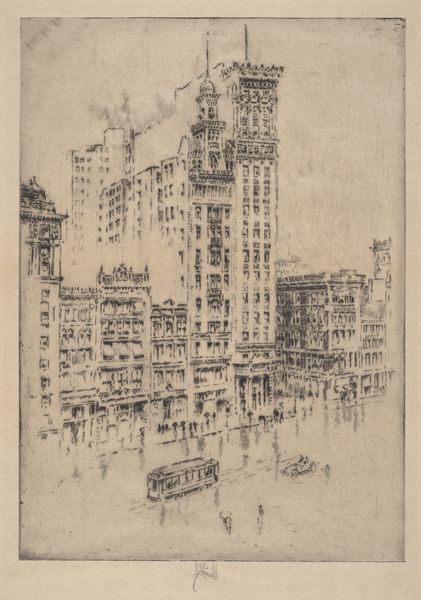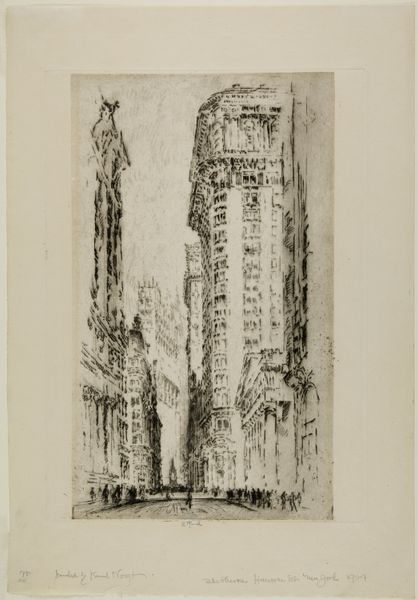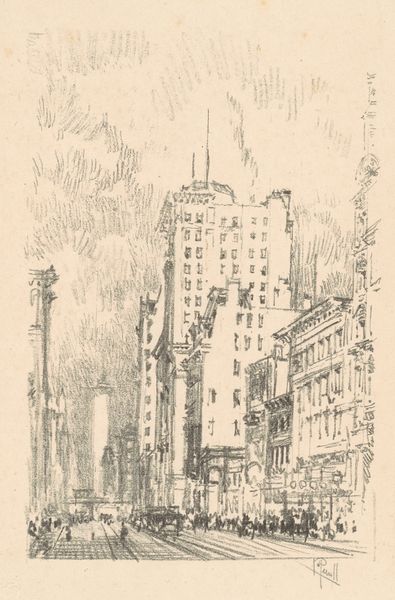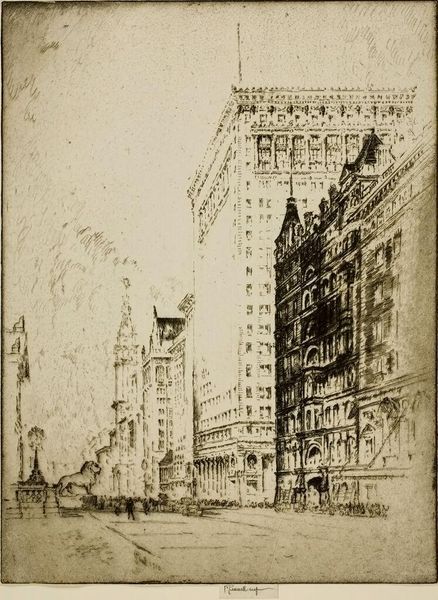
Dimensions: 11 3/4 x 7 13/16 in. (29.85 x 19.84 cm) (plate)13 1/4 x 8 1/8 in. (33.66 x 20.64 cm) (sheet)
Copyright: No Copyright - United States
Curator: Joseph Pennell created this etching, titled "The -L- and Trinity Building," in 1904. It captures a scene of early 20th-century urban development. Editor: My initial reaction is the stark contrast between the solid forms of the existing buildings and the skeletal, almost ethereal framework of the new skyscraper under construction. It's like a city caught between past and future. Curator: Absolutely. Pennell's focus here connects directly to debates around modernity and the impact of rapid industrialization on the urban landscape. Consider the elevated train—the “-L-“—itself a symbol of progress and social stratification, carving through the established streetscape. Editor: Visually, the etching's strength lies in its dynamic lines. Pennell uses them to suggest the density and energy of the city. The layering of these lines creates depth, drawing the eye toward the imposing structure while it flattens perspectival depth around it. Curator: And let's not forget the role of the Trinity Building in this narrative. It speaks to institutional power, both religious and financial, and how its physical presence dominated New York's identity and how construction challenges that old order. The etching suggests that the city, much like the Trinity building’s, social constructs are subject to ongoing modification. Editor: True. The work's materiality is quite significant too, you know? The intentional imperfections of the etching process – the visible lines, the uneven inking – lend a rawness that complements the gritty subject matter, adding to the sense of a city in flux, unfinished. It echoes the very themes present in the urban sprawl, perfectly synchronistic with the image Pennell sets out to reveal. Curator: Indeed. Thinking about labor and class dynamics further enriches the viewing experience. We might consider, from an intersectional perspective, how the skyscraper represents not just architectural progress but also the exploitation of labor and resources required to achieve this vision. These structures, and how that would ultimately change wealth distribution and community sustainability as time moved forward. Editor: From my perspective, it's the strategic play between precision and suggestion which makes the etching successful. Certain elements, like the buildings further back in the street, are indicated with the bare minimum of line work, forcing the viewer to actively construct their understanding of the space, as space shifts and changes within this work. It's truly an exercise in visual economy. Curator: Examining this artwork through our unique lenses emphasizes its multi-layered complexity; more than a representation of architectural progress. It invites contemplation about how it also captures evolving notions of identity and socio-economic hierarchies. Editor: For me, "The -L- and Trinity Building" provides insight into how visual choices shape our perception. Its lasting power lies in its technical brilliance and in how we look to read urban spaces through the tension and resolution of line and form.
Comments
No comments
Be the first to comment and join the conversation on the ultimate creative platform.

